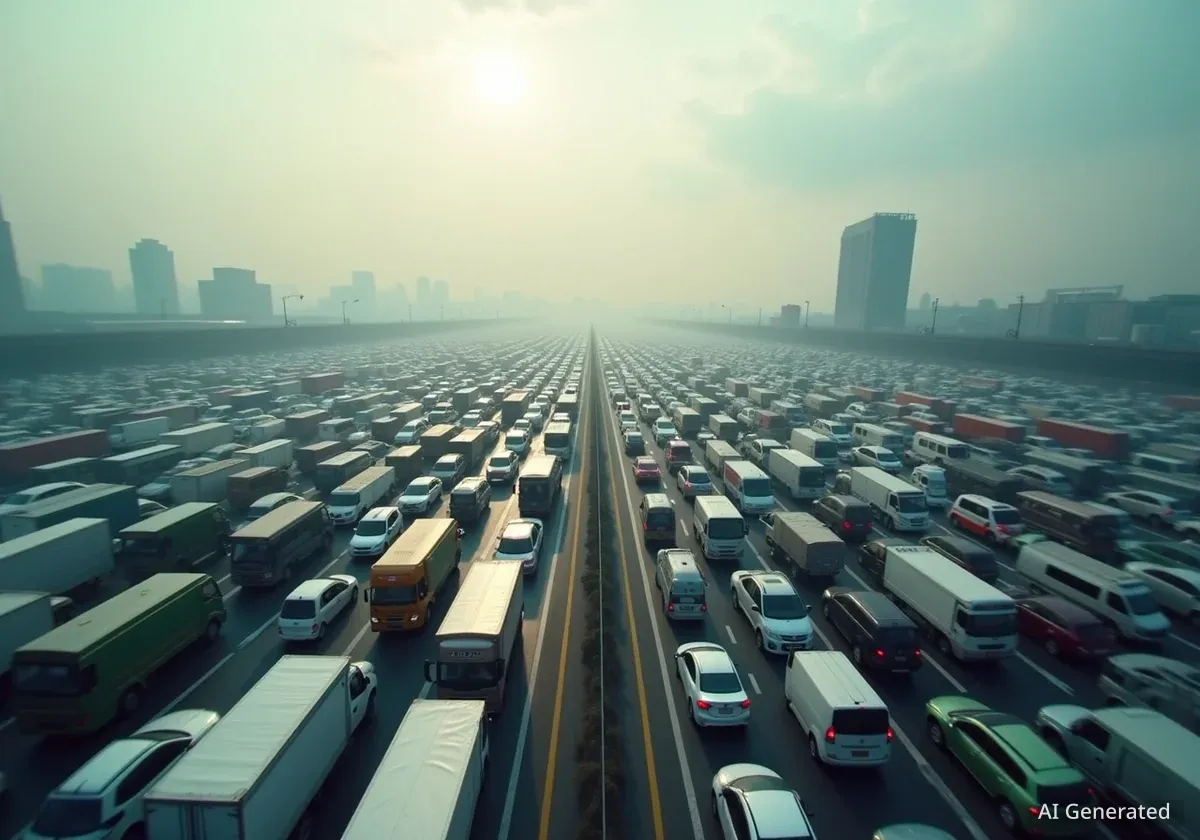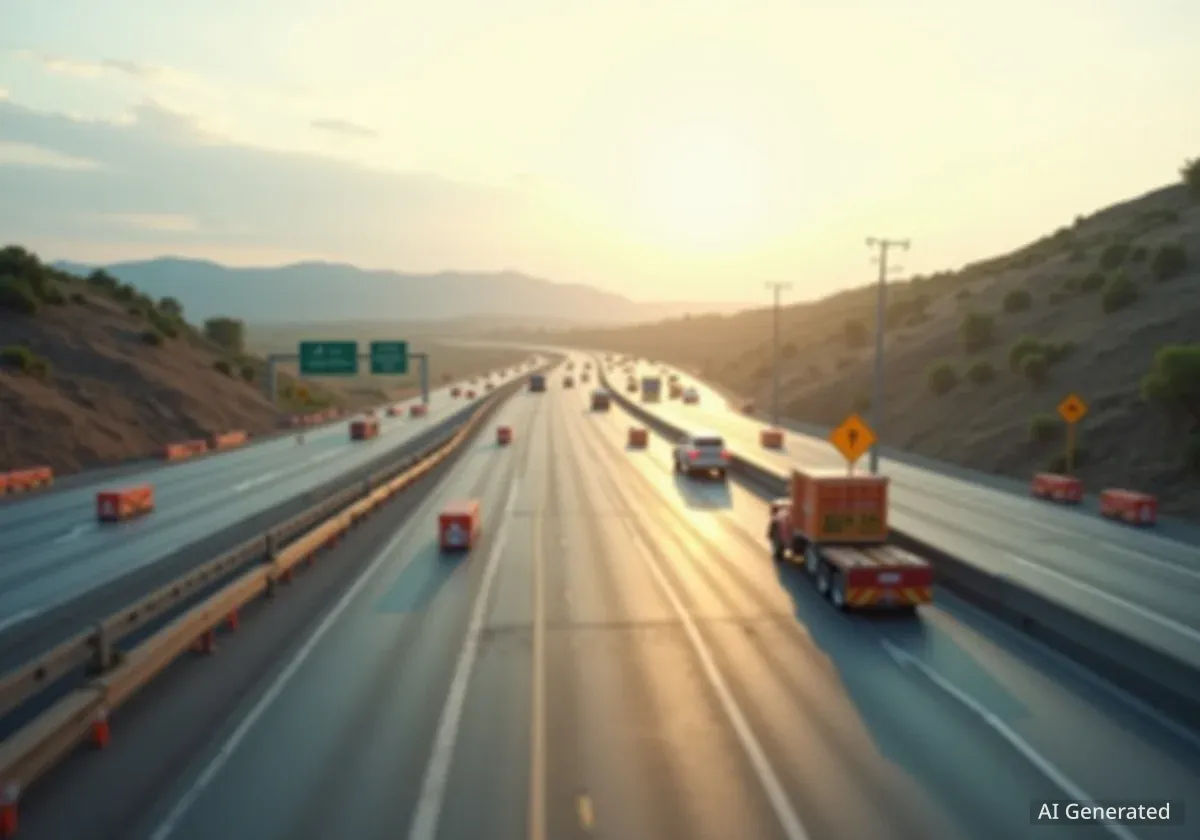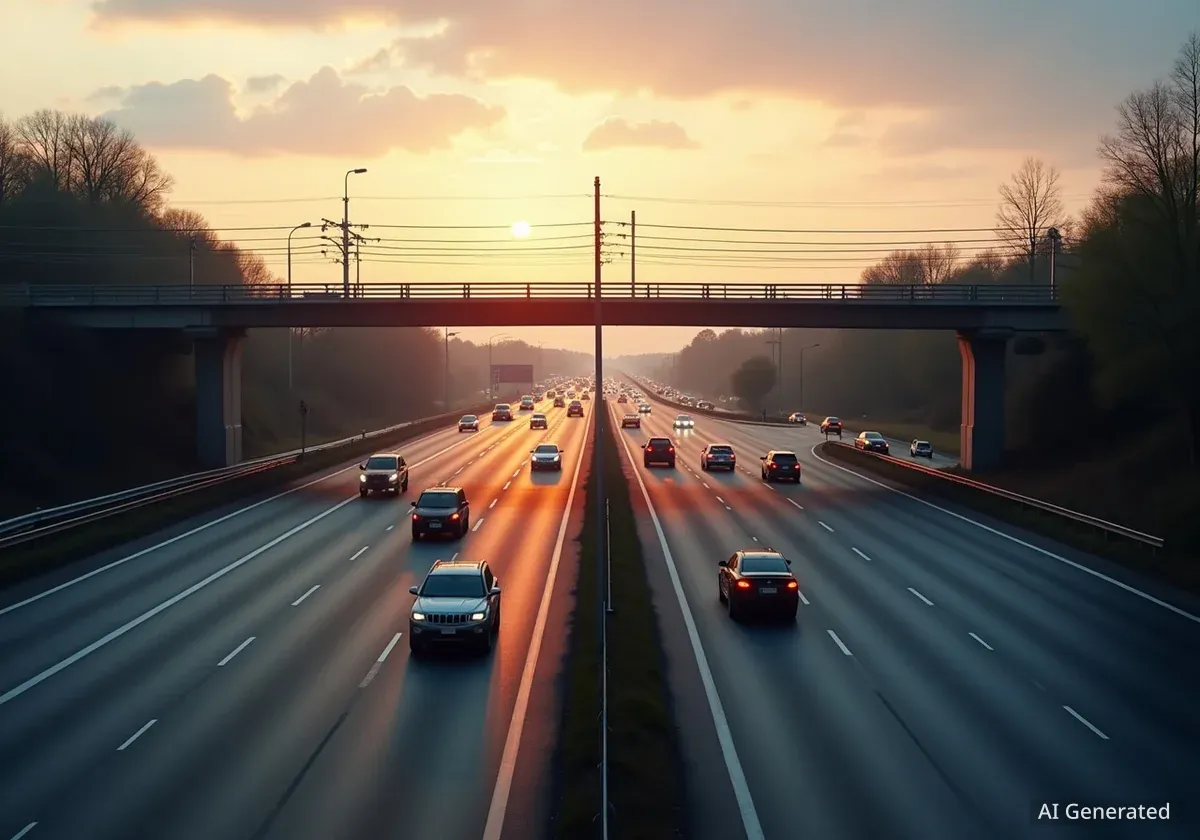Millions of travelers returning home after an extended national holiday in China were caught in a massive traffic jam that lasted nearly 24 hours. The gridlock occurred at the Wuzhuang toll station in Anhui Province on Monday, October 6, as an unprecedented volume of vehicles overwhelmed one of the country's largest toll plazas.
Key Takeaways
- A major traffic jam lasting nearly 24 hours occurred at the Wuzhuang toll station in China's Anhui Province.
- The gridlock was caused by millions of travelers returning home after an 8-day National Day and Mid-Autumn Festival holiday.
- Drone footage showed vehicles on a 36-lane highway being forced to merge into a four-lane bottleneck at the toll gates.
- China's Ministry of Culture and Tourism reported a record 888 million trips were made during the holiday period.
Record Holiday Travel Triggers Massive Congestion
The end of China's combined National Day and Mid-Autumn Festival holiday created severe traffic congestion across the country. The most significant bottleneck was reported at the Wuzhuang toll station, a massive facility designed to handle high volumes of traffic. On October 6, the highway transformed into a sea of red tail lights as countless motorists became stranded.
This year's holiday was extended to eight days, from October 1 to 8, because the Mid-Autumn Festival, a major family-oriented celebration, coincided with the week-long National Day break. This longer holiday period encouraged more people to travel, leading to a surge in road traffic as the break concluded.
Officials had anticipated a heavy flow of vehicles, with estimates suggesting more than 120,000 would pass through the Wuzhuang toll plaza on that single day. However, the sheer volume of cars created a standstill that lasted for many hours, highlighting the challenges of managing peak travel periods.
Travel by the Numbers
According to China's Ministry of Culture and Tourism, the 2023 holiday period saw a record 888 million trips taken across the country. This represents a significant increase from the 765 million trips recorded during the same holiday period last year, underscoring the growing trend of domestic travel.
Infrastructure Bottleneck at 36-Lane Toll Plaza
Drone footage of the Wuzhuang toll station quickly went viral, providing a striking visual of the infrastructure problem. The images captured a vast highway with as many as 36 lanes fanning out, all filled with slow-moving or stationary vehicles. The primary cause of the gridlock was the highway's design, which forced this massive flow of traffic to merge abruptly into just four lanes to pass through the toll gates.
This dramatic reduction in capacity created an immediate and severe bottleneck. As vehicles crawled forward, the wide expanse of the highway effectively became a massive parking lot. The footage sparked widespread discussion online about infrastructure planning and traffic management in the face of China's rapidly growing number of car owners.
Public Reaction and Discussion
The viral clips prompted a wave of commentary on social media platforms. Many users pointed to the flawed road design as the obvious cause of the congestion. One user commented on the logistical issue, stating:
"Well when you have 32 lanes that merge into 6… I mean what do you expect.”
Others viewed the chaotic scene from a different perspective. "Chaos looks beautiful when you are not in it," another viewer remarked, highlighting the mesmerizing yet frustrating nature of the drone footage. The incident also fueled a broader conversation about transportation policy and the need for alternatives to private car ownership.
A third user wrote, "That’s where mass transit plays a bigger role, can’t just let everyone drive a car simply because they can afford. Introduce high congestion, improve mass transit at the lowest cost possible." This sentiment reflects a growing debate in many urbanized nations about sustainable transportation solutions.
A History of 'Carmageddon' Events
This incident is not an isolated one in China's recent history. The country has experienced several notable traffic jams of epic proportions. The most famous example occurred in 2010 on the Beijing-Tibet Expressway. That gridlock, which began on August 14, stretched for more than 100 kilometers and left some travelers stranded for nearly 12 days. The jam was caused by a combination of road construction and several broken-down trucks that blocked the route, turning the major highway into a temporary city of stranded vehicles.
Lessons from the Gridlock
The event at the Wuzhuang toll station serves as a stark reminder of the immense pressure on China's transportation infrastructure, particularly during peak holiday seasons. While the country has invested heavily in building extensive highway networks, choke points like toll plazas remain a significant challenge.
As car ownership continues to rise and domestic tourism booms, managing these massive movements of people will require more than just building wider roads. The public discussion following the gridlock suggests a growing awareness of the need for integrated solutions, including expanding high-speed rail networks and other forms of mass transit to alleviate the strain on the country's highways.
In the meantime, drivers shared practical advice online. One user offered a tip born from experience: "This is why you always keep an empty shopping bag, a cup or bottle, and snacks in the car." For the thousands stuck in Anhui Province, that advice likely came too late.





